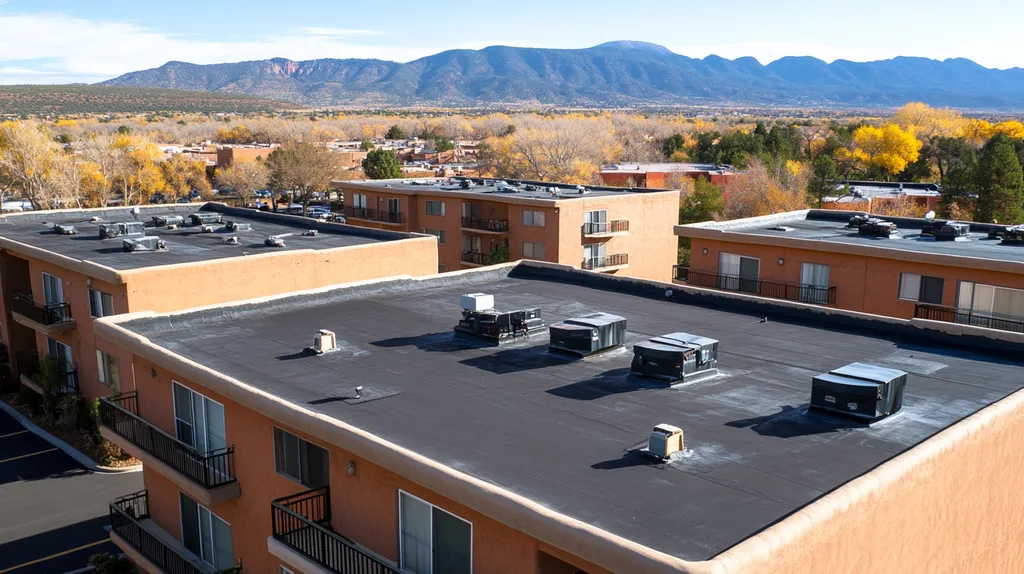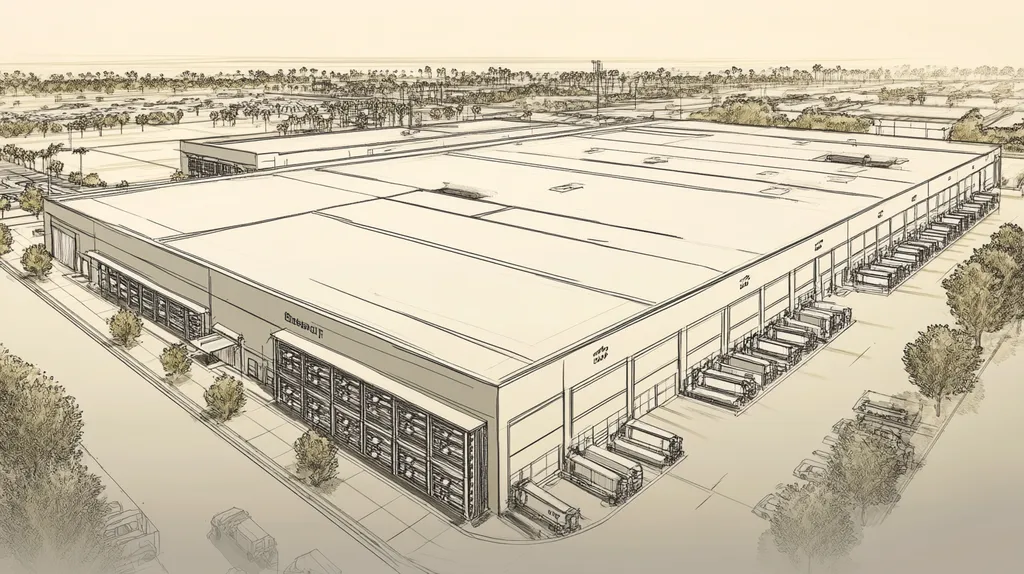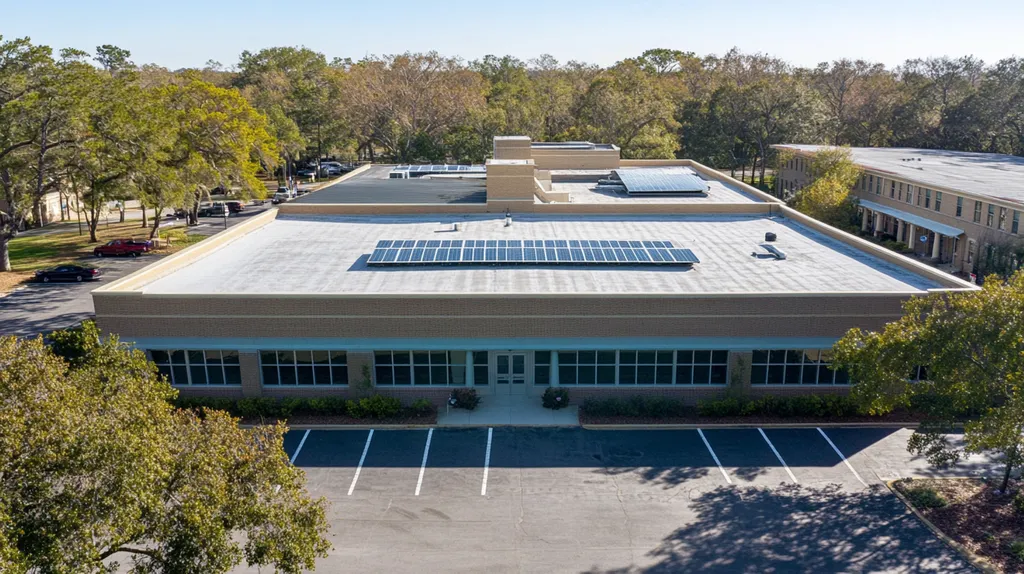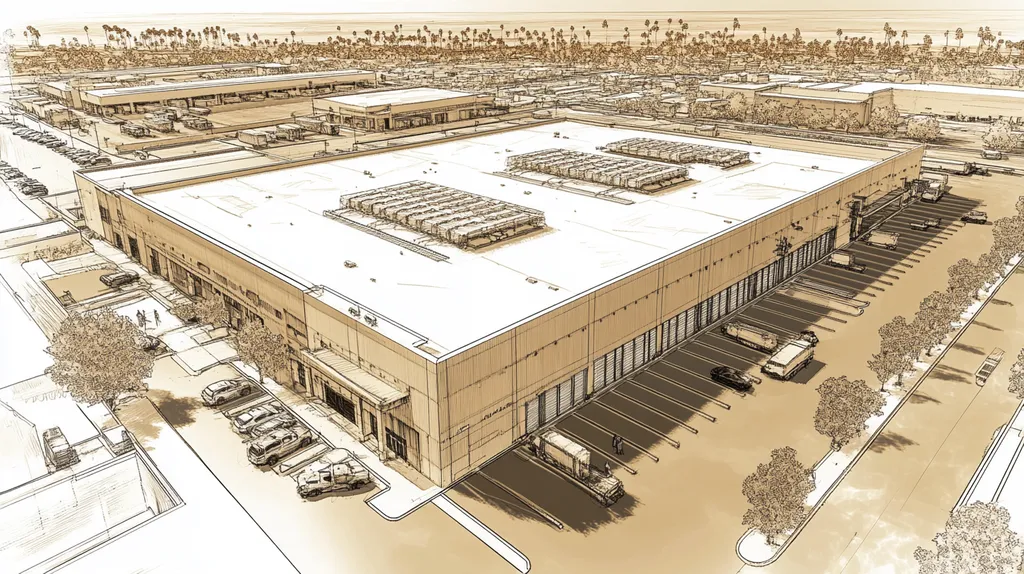Across the commercial real estate sector, over 80% of premature roof failures stem from inadequate inspections and maintenance oversight, resulting in billions in preventable repair costs annually.
Despite the critical role of regular inspections in preserving building integrity and protecting investments, widespread misconceptions continue to influence property owners’ decisions about roof maintenance.
This analysis examines common myths surrounding commercial roof inspections, their practical implications, and evidence-based strategies that can help building owners make informed decisions about their roofing assets.
SECTION 1: COMMON MISCONCEPTIONS
Many property owners harbor misconceptions about commercial roof inspections that can lead to serious financial and structural consequences. One common belief is that inspections are only required when damage is visibly apparent. This attitude may result in neglecting underlying problems that could escalate into costly repairs. Additionally, some owners think that roofs can be safely ignored until they need a complete replacement. This assumption can jeopardize a building’s integrity and inflate repair costs. Addressing these misconceptions is vital to make informed, proactive decisions about roof maintenance and longevity.
Inspections Are Only Needed When Damage is Visible
Many property owners mistakenly believe that roofing inspections are only necessary when there are visible signs of damage, such as leaks or missing shingles. This narrow perspective neglects the critical role of preventive maintenance. Issues like moisture accumulation or structural weaknesses can quietly develop and cause significant damage without being easily noticeable.
For example, while a commercial roof may look intact from the outside, hidden water infiltration could be causing serious problems, such as wood rot or mold growth underneath the surface. These concealed issues can lead to escalating repair costs and jeopardize tenant safety. Routine inspections can unearth these hidden threats before they culminate in major repairs, ultimately saving money in the long term.
Thorough inspections are crucial to detect factors that may not be evident during casual observation, including hail damage or early signs of wear. Neglecting regular inspections increases the likelihood of long-term risks that can spiral out of control.
In conclusion, relying solely on visible damage as a trigger for inspections is a risky strategy. Proactive inspections can identify hidden vulnerabilities and ensure the roof’s durability and performance.
Roofs Can Be Ignored Until Replacement is Necessary
Another widespread belief is that roofs can be safely ignored until they are in dire need of replacement. This mindset poses significant risks to both the structural integrity of the building and its financial health. Implementing regular maintenance and inspections can extend a roof’s lifespan, often by several years.
Neglecting minor repairs or routine maintenance, such as removing debris or sealing small leaks, can lead to severe deterioration over time. For instance, a small, easily repairable leak can turn into extensive water damage, necessitating a total roof replacement that could have been avoided.
Regular inspections prevent decline and provide essential insights into the roof’s condition, allowing property owners to anticipate when replacement may be genuinely required. This foresight aids in better financial planning and budgeting. By maintaining awareness of the roof’s condition throughout the year, owners can allocate funds more strategically.
In summary, prioritizing early roof maintenance and inspections is crucial. Instead of waiting for a crisis to emerge, building owners should embrace a proactive approach to avert premature replacements and costly repairs.
All Roofing Materials Require the Same Maintenance
A common misunderstanding is that all roofing materials demand identical maintenance standards. In truth, various materials, such as TPO, EPDM, or metal, each possess distinct care needs. Overlooking these differences can lead to improper maintenance practices that jeopardize the roof’s longevity.
For instance, although a TPO roof may necessitate specific cleaning agents to avoid degradation, a metal roof may require regular repainting to prevent rust. Utilizing the wrong maintenance technique could shorten the roof’s lifespan and potentially void warranties.
Understanding the unique maintenance requirements for different roofing materials facilitates timely repairs and inspections. Regular consultations with roofing professionals knowledgeable about specific materials can aid in establishing customized maintenance programs.
Ultimately, recognizing that roofing maintenance is not a one-size-fits-all scenario is essential. Tailored maintenance strategies enhance performance, safety, and the overall lifespan of commercial roofs.
SECTION 2: PRACTICAL IMPLICATIONS
Commercial roof inspections are not mere formalities; they are critical to sustaining the integrity and safety of a building. Alarmingly, the National Roofing Contractors Association reveals that 85% of roof failures stem from inadequate maintenance. By prioritizing regular inspections, property owners can prevent significant repair costs, enhance safety, and improve overall building performance. This section delves into the vital implications of consistent roof evaluations on structural safety, energy efficiency, and tenant satisfaction.
Impact on Building Integrity and Safety
The safety and structural integrity of a commercial building depend heavily on its roofing system. Undetected issues, such as leaks or structural weaknesses, can threaten the entire facility, transforming minor cracks into major water damage. Such damage not only endangers assets but also poses risks to occupants.
Moreover, routine roof inspections can pinpoint hazards like mold growth or damaged insulation. Tackling these problems not only protects the building but also adheres to safety regulations, minimizing liability risks. Regular inspections serve as proactive safeguards, ensuring that the roof remains functional and secure.
Failing to conduct these inspections can lead to severe consequences, with approximately 33% of commercial roofs being replaced prematurely due to damages that could have been detected early. Investing in roof inspections is not just a smart financial strategy; it protects the physical assets and workforce of the business.
Ultimately, a robust roofing system is fundamental to a safe business environment. Inspections function as an early warning system, significantly reducing the likelihood of catastrophic failures that could lead to injury or property loss.
Effects on Energy Efficiency and Operational Costs
Energy efficiency is intrinsically linked to a building’s roof quality. A well-maintained roof effectively reflects sunlight and regulates indoor temperatures, which can significantly lower energy consumption. The U.S. Department of Energy notes that proper roofing can cut cooling costs by up to 30%.
Conversely, neglecting roof upkeep can result in energy leaks that force HVAC systems to operate less efficiently. This inefficiency can drive utility bills skyward and lead to accelerated wear on equipment. Regular inspections help identify insulation issues before they escalate, helping to maintain long-term operational efficiency.
Additionally, roofing complications, such as debris accumulation and damage, can inflate maintenance costs. Proactive inspections help avoid the financial burden associated with emergency repairs. By addressing issues early, property owners can effectively manage their operational budgets.
In summary, routine roof inspections not only improve energy efficiency but also yield substantial cost savings over time. Investing in these evaluations leads to lower operational expenses while supporting environmentally responsible building practices.
Consequences for Tenant Comfort and Productivity
Tenant comfort plays a pivotal role in commercial properties, and the roof is central to that experience. Leaks and inadequate insulation can result in uncomfortable indoor conditions, such as fluctuating temperatures and disruptive noise, harming tenants’ overall satisfaction.
Employers aiming for high productivity must recognize the influence of their physical environment. Research shows that poor working conditions can decrease employee productivity by as much as 20%. Regular roof inspections help maintain a consistent and pleasant indoor atmosphere, contributing to tenant satisfaction.
Furthermore, unresolved roofing issues can lead to tenant turnover, negatively affecting rental income and increasing costs associated with attracting new tenants. Consistent inspections help foster a positive reputation for property owners and encourage tenant retention.
In conclusion, regular roof inspections represent a commitment to tenant welfare. The advantages in tenant comfort, workplace productivity, and long-term retention make these evaluations a worthwhile investment for maintaining healthy tenant relationships.
SECTION 3: COST OF MISINFORMATION
The implications of neglecting essential roof inspections can be staggering for property owners. Alarmingly, research indicates that 60% of commercial roof failures arise from inadequate maintenance and oversight. Failing to prioritize regular inspections can lead not only to financial losses but also to serious structural issues that demand immediate attention. This section highlights the high stakes of misinformation concerning roof care, focusing on the critical consequences of delayed repairs, increased structural risks, and rising costs.
Financial Consequences of Delayed Repairs
Postponing necessary repairs due to misinformation can inflict significant financial damage. When small issues remain unresolved, they can snowball into much larger problems. For example, a minor leak that is overlooked may quickly escalate, resulting in extensive water damage that necessitates not only roof repairs but also interior restoration and mold remediation.
This domino effect of abandonment can lead to repair costs that start at a few hundred dollars and soar into the tens of thousands if left unaddressed. Such costly situations highlight the urgency of consistent inspections and proactive maintenance.
Additionally, unexpected repair expenses can strain budgets, disrupting long-term financial planning. Property owners may find themselves reallocating funds from key investment initiatives or other essential areas due to roofing-related expenditures.
By recognizing the financial advantages of prompt repairs, property owners can better appreciate the critical role regular roof inspections play in preventing larger costs and operational setbacks.
Increased Risk of Structural Damage and Leaks
Neglecting roof inspections carries a heightened risk of structural damage. The roof serves as a building’s primary defense against environmental elements, and weaknesses that go unassessed can lead to catastrophic outcomes. Over time, factors such as ultraviolet radiation, moisture, and debris can compromise roofing materials.
A degraded roof may result in leaks that threaten not only the roof itself but the entire structural integrity of the building. Water intrusion can weaken support beams and create unsafe conditions, jeopardizing tenant safety and overall operational efficiency.
Additionally, poor maintenance can attract scrutiny from city inspectors, leading to violations and fining for non-compliance with building codes. These penalties represent additional costs that could have been easily avoided through regular inspections.
Ultimately, neglecting roof care due to misinformation can result in serious safety hazards alongside significant repair expenses. Ongoing inspections play a vital role in mitigating these risks by enhancing the overall stability of the building.
Potential for Higher Insurance and Maintenance Costs
Failing to prioritize roof inspections can result in increased insurance premiums. Insurance providers evaluate risk based on property condition; a well-maintained roof can lead to lower rates, while signs of neglect can prompt higher costs or even denied claims for damages.
Moreover, maintenance expenses can escalate drastically when regular preventative measures are overlooked. A seemingly minor issue, like a small puncture, left unchecked can eventually lead to a costly maintenance crisis.
Neglecting compliance with warranty requirements can further impact costs, as many roofing systems necessitate regular inspections to maintain coverage. Ignoring these provisions may eliminate protection against future damages.
On the other hand, committing to consistent roof inspections can help stabilize insurance rates and limit unpredictable maintenance costs. By steering clear of misinformation, property owners can foster long-term financial sustainability and security.
SECTION 4: REALITY CHECK
Regular inspections of commercial roofs are not merely advantageous; they are indispensable for maintaining property value and ensuring safety. Industry statistics reveal that nearly 50% of roof failures are attributed to insufficient maintenance and oversight. Building owners must prioritize these inspections to catch potential issues before they become costly repairs or safety hazards. This section will delve into the crucial elements of regular inspections, the implications of different roofing materials on maintenance needs, and the regulatory requirements that govern roofing practices.
The Importance of Regular Inspections
Regular inspections are vital for detecting issues such as leaks, membrane deterioration, and structural weaknesses. Ignoring these checks can turn minor problems into major failures. Timely inspections can significantly extend the lifespan of a roof—sometimes adding five to ten years or more.
Building owners should schedule annual inspections, especially following severe weather conditions. Events like heavy snowfall or hail can cause hidden damage that may not be immediately apparent but shortens a roof’s lifespan. Being proactive not only minimizes unexpected emergency costs but also helps in meeting insurance requirements.
A thorough inspection provides essential documentation, which can be invaluable during negotiations with contractors for repairs or replacements. Insurers often require evidence of routine maintenance to process claims for any future damage.
In summary, regular inspections are a cornerstone of effective roof management, contributing to both safety and the protection of financial investments.
Differentiating Between Roofing Materials
The roofing material in use significantly influences the frequency and method of inspections required. For example, flat roofs necessitate more frequent attention than sloped roofs, primarily due to the risk of stagnant water pooling. While materials like TPO and PVC offer enhanced durability, they still require diligent monitoring.
Older roofing systems, such as built-up roofs, may present particular challenges, including an increased likelihood of leaks. Understanding the specific needs of each roofing material enables property managers to implement targeted inspection strategies.
This knowledge not only aids in scheduling inspections appropriately but also helps in anticipating maintenance needs. Regular assessments tailored to each type of roofing material can save costs in the long run by addressing issues before they escalate.
In conclusion, each roofing material has distinct maintenance requirements, reinforcing the necessity for customized inspection approaches to maximize the lifespan and performance of commercial roofs.
Understanding Local Regulations and Compliance
Adhering to local building codes and regulations is critical for any commercial roofing endeavor. Many jurisdictions mandate regular inspections as part of their construction safety standards. Failure to comply can result in hefty fines or even the forced closure of a facility.
Building owners should familiarize themselves with local regulations concerning roofing systems. Proactively understanding these requirements not only protects investments but also establishes a safe environment for employees and visitors alike.
Compliance often necessitates proper documentation, incorporating inspection reports into the broader property management strategy. This proactive approach can simplify interactions during emergencies or inspections conducted by city officials.
By embedding compliance into regular inspection routines, property owners safeguard against penalties while ensuring that their roofing systems align with current safety standards.
SECTION 5: EVIDENCE-BASED ALTERNATIVES
The state of a commercial roof is critical to the overall well-being of a property. Neglecting necessary inspections can lead to repair costs skyrocketing—by as much as 20% more due to deferred maintenance. Proactive management through timely inspections and maintenance strategies is essential to preserving property value and operational efficiency. This section discusses effective strategies that enhance roofing decision-making and protect valuable investments.
Implementing Biannual Inspection Schedules
Establishing a biannual inspection schedule is crucial for effective roof maintenance. Regular inspections ensure early detection of potential issues, preventing minor concerns from escalating into significant repair needs. For instance, routine assessments can reveal signs of wear, such as blistering or ponding water, which, if neglected, can result in severe leaks and damage.
These inspections also create a structured way for facility managers to track the roof’s condition over time. This data-driven approach informs future budgeting for repairs and replacements. By prioritizing proactive inspections, building owners can protect their assets and enhance the longevity of their roofs.
Failure to maintain regular inspections often leads to unexpected roof failures and elevated operational costs. Scheduling these evaluations allows property owners to gain insight into their roof’s performance and extend its lifespan. This method should be integrated into an overall facility management strategy to optimize outcomes.
Moreover, documented inspections can enhance property value during sales or insurance negotiations, serving as proof of diligent maintenance. Biannual inspections ultimately constitute a wise investment in a commercial roof’s longevity and reliability.
Using Advanced Inspection Techniques Like Infrared Scans
Implementing advanced inspection techniques, such as infrared scans, is invaluable for uncovering hidden roofing issues. These technologies can identify thermal anomalies that indicate moisture intrusion—problems that may not be apparent in a standard visual inspection. By addressing these issues early, building owners can prevent significant damage and costly repairs.
Infrared scans are especially effective for flat roofs prone to pooling water. By detecting moisture trapped beneath roofing layers, property managers can avert unexpected leaks and failures. This proactive technique conserves time, resources, and finances, delivering a high return on investment.
Incorporating these technologies into routine inspections enhances overall roof management strategies. Infrared technology increases inspection accuracy and improves safety by minimizing labor-intensive manual checks. Additionally, these advanced methods enable better planning for maintenance or replacement, contributing to improved building performance.
As the roofing industry evolves, embracing cutting-edge inspection methods should be standard for all property owners. Neglecting these options may lead to undetected critical issues that threaten the integrity of commercial roofs.
Hiring Qualified and Experienced Roof Inspectors
The qualifications and experience of roof inspectors significantly affect the success of the inspection process. Skilled inspectors possess comprehensive knowledge of various roofing systems, enabling them to accurately identify areas of concern. This expertise results in more effective assessments and provides valuable insights for maintenance planning.
Employing inspectors with relevant certifications ensures thorough and reliable inspections. For example, inspectors trained in modern building codes and roofing materials can identify necessary repairs or upgrades that prevent future complications. This specialized knowledge also protects property investments.
Furthermore, qualified roof inspectors can educate property owners on the specific needs of their roofs. This guidance equips facility managers with the information essential for making informed maintenance decisions. Over time, this collaborative approach enhances a roof’s durability and overall performance.
In conclusion, investing in qualified professionals for roof inspections is pivotal for maintaining commercial properties. Their expertise helps navigate the complexities of roof maintenance, ensuring systems remain functional and effective. Prioritizing experienced inspectors is a wise decision for building owners looking to safeguard their investments.
SECTION 6: TEST AND VERIFY
In a landscape where roofing failures can lead to unexpected costs and operational disruptions, the need for thorough inspections cannot be overstated. Alarmingly, around 30% of commercial roofs are found to have severe underlying issues that often remain undetected until they result in significant leaks or structural failures. Emphasizing the importance of rigorous testing and verification not only helps prolong the life of a roof but also protects the overall investment in your property.
Conducting Thorough Visual Examinations
A visual inspection serves as the initial defense in assessing a commercial roof’s health. Seasoned inspectors examine the roof for visible signs of damage, such as blisters, cracks, and punctures. These minor issues, if left unresolved, can escalate rapidly.
Property owners often overlook subtle signs of wear, which can prove detrimental. For instance, standing water may seem harmless but poses risks of leaks and structural damage over time. Experienced inspectors are adept at spotting these potential hazards early, enabling proactive maintenance interventions.
During the visual examination, it is essential to conduct a comprehensive review of flashing, roof penetrations, and seams. Each of these critical components is vulnerable to degradation and can lead to significant complications if not routinely monitored. Additionally, inspectors assess debris accumulation, which can trap moisture and accelerate deterioration.
This thorough approach empowers property owners to make well-informed decisions regarding necessary repairs or replacements. Regular visual inspections not only help mitigate future expenses but also ensure the roof continues to function as intended.
Analyzing Core Samples for Material Condition
Core sampling is a pivotal technique for gaining deeper insights into the material condition of roofing systems. This process involves extracting samples from the roof, allowing inspectors to evaluate the layers and assess their integrity—offering insights that visual inspections may miss.
By taking core samples, it becomes possible to closely examine insulation and substrate materials, revealing hidden moisture or decay that could jeopardize the roof’s effectiveness. For example, a core sample could indicate saturated insulation, signaling an urgent need for repair.
Property owners should recognize the value of these tests, especially when evaluating older roofs. An aging roof might appear sound from the outside, yet core sampling may uncover concealed issues, ensuring that property managers are not misled by mere appearances.
Critically, documentation of core sample analyses is vital. Such records establish a baseline for future evaluations, helping owners monitor the roof’s condition over time and anticipate the need for interventions.
Documenting Inspection Results for Future Reference
The significance of comprehensive documentation during roof inspections is paramount. Each evaluation should culminate in a detailed report summarizing findings, complete with photographs and actionable recommendations. This documentation becomes a valuable resource for both current and future roofing decisions.
By maintaining a documented history of inspections, property owners can effectively track the progression of roof conditions. Should any issues arise, facility managers can reference previous evaluations to identify trends that warrant further examination and timely action.
Moreover, a well-organized record of inspections and repairs has the potential to enhance a property’s value. Prospective buyers or investors often view such documentation as evidence of meticulous management and care, positively influencing their purchasing decisions.
Additionally, consistent upkeep of these records facilitates clearer communication with roofing contractors. Detailed documentation offers contractors a comprehensive understanding of the roof’s history, potentially leading to more accurate assessments and tailored recommendations for maintenance or upgrades.
The Bottom Line
With over 80% of commercial roof failures stemming from inadequate inspections, the financial stakes for property owners have never been higher.
Regular, professional roof inspections represent the cornerstone of responsible building management, potentially saving organizations hundreds of thousands in preventable repairs.
The evidence is clear: buildings with consistent inspection programs experience 70% fewer catastrophic roof failures and maintain their warranty coverage more effectively than those without.
By embracing modern inspection techniques, following material-specific maintenance protocols, and maintaining detailed documentation, property owners can extend roof lifespans by 25-40% while significantly reducing long-term operational costs.
The choice between proactive inspection programs and reactive emergency repairs will increasingly define successful commercial property management in the coming decades.
FREQUENTLY ASKED QUESTIONS
Q. Are commercial roof inspections only necessary when damage is visible?
A. Many property owners mistakenly believe inspections are only needed when visible damage appears. This narrow view can lead to neglecting hidden issues that silently develop beneath the roof surface, like water infiltration or structural weaknesses. Routine inspections can discover these concealed problems before they exacerbate into costly repairs, ensuring better roof longevity and performance.
Q. How do commercial roof inspections impact building integrity and safety?
A. Regular inspections are essential for maintaining the safety and structural integrity of a building. They help identify hazards such as leaks or structural weaknesses that could result in significant damage or tenant safety risks. By conducting timely evaluations, property owners can effectively mitigate these risks, ensuring a secure environment and adhering to safety regulations.
Q. What are the financial consequences of neglecting commercial roof inspections?
A. Delaying repairs due to competition can lead to towering financial burdens. Minor issues can escalate into substantial repairs, such as significant water damage or mold remediation. These unforeseen costs strain operational budgets and can disrupt financial planning. Regular inspections help prevent these scenarios by identifying and addressing issues before they magnify.
Q. Why are local regulations important for commercial roof inspections?
A. Local regulations often mandate regular roof inspections to ensure safety and compliance with construction standards. Not adhering to these rules can result in heavy fines or forced closure of properties. Familiarizing oneself with these regulations helps protect investments and maintains a safe environment for all building occupants.
Q. How can biannual inspections enhance commercial roof management?
A. Biannual inspections are critical for early detection of roof issues, preventing small concerns from exacerbating. This scheduled approach allows facility managers to consistently monitor the roof’s condition, aiding in financial planning for repairs. Additionally, routine assessments can extend the roof’s lifespan and contribute positively to overall property management strategies.
Q. What advanced inspection techniques should be used for commercial roofs?
A. Techniques like infrared scans are invaluable for detecting hidden moisture and thermal anomalies in roofing systems. These methods accurately identify potential issues not visible in standard inspections, allowing building owners to address problems proactively. Incorporating advanced technologies contributes to more robust maintenance strategies, enhancing the overall condition of commercial roofs.
Q. Why is documentation essential during roof inspections?
A. Comprehensive documentation during inspections is crucial for tracking the roof’s condition over time. Maintaining detailed records helps property owners recognize trends and anticipate necessary interventions. Moreover, solid documentation enhances property value, serving as evidence of effective management during transactions or negotiations with contractors and insurance providers.










